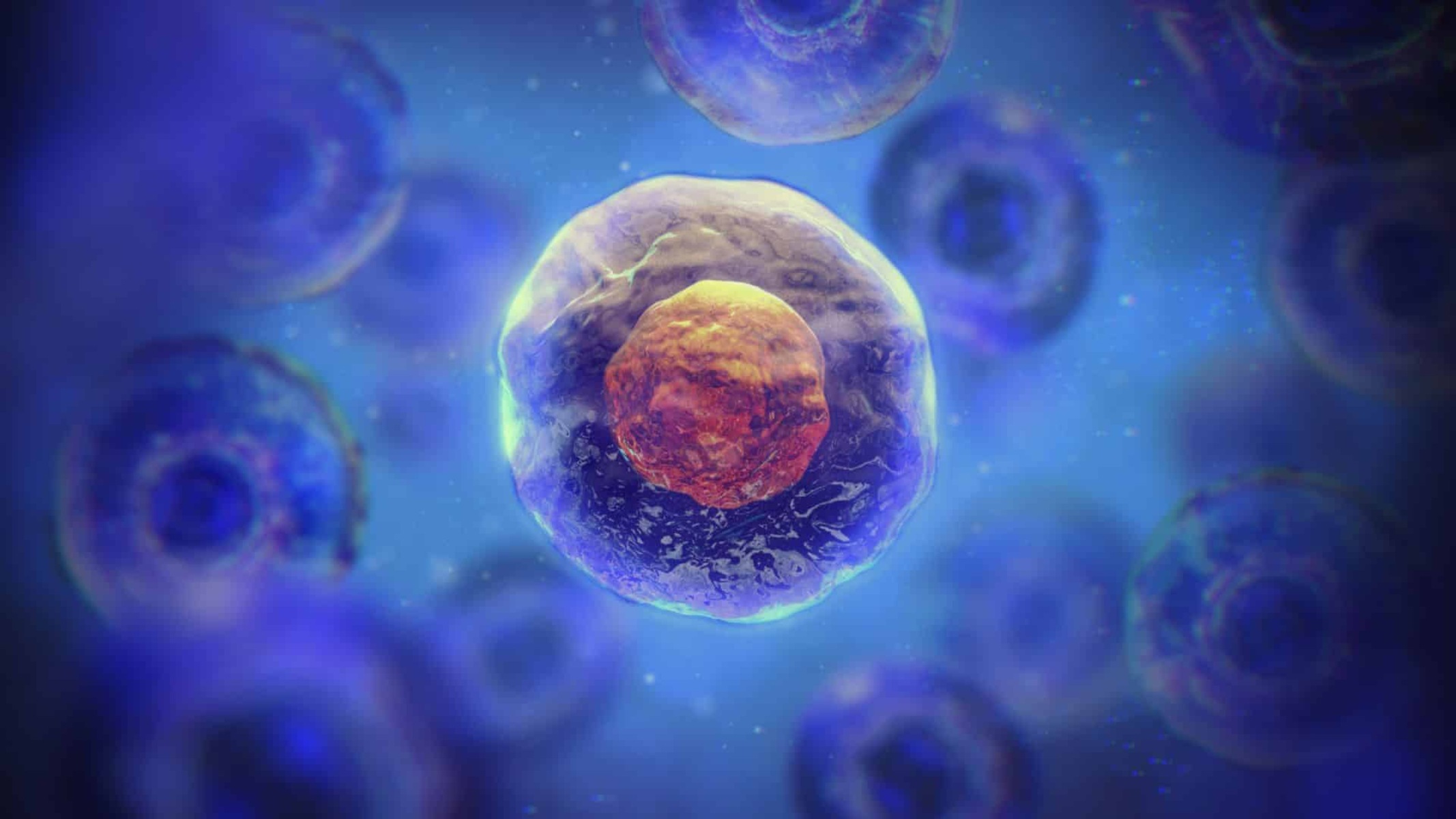
The nucleus is one of the most vital and enigmatic components of a cell. It serves as the command center, controlling and regulating various cellular activities. This specialized organelle, typically found in eukaryotic cells, plays a crucial role in storing genetic information, orchestrating cell division, and regulating gene expression.
Although the nucleus may appear small and unassuming, it holds numerous secrets and surprises. In this article, we will delve into the intriguing world of the nucleus and uncover ten enigmatic facts that will leave you astonished at the complexity and wonder of cellular life. So, fasten your seatbelt and get ready to explore the nucleus in all its mysterious glory!
Key Takeaways:
- The nucleus is like the brain of a cell, controlling all its activities and holding the genetic instructions for life. It’s like a command center, regulating gene expression and cell division.
- The nucleus is a dynamic and ever-changing powerhouse, constantly adapting to the needs of the cell. It’s like a busy city, with different structures and functions working together to keep everything running smoothly.
The Nucleus: The Command Center of the Cell
The nucleus is like the brain of the cell, overseeing all its activities and harboring the genomic blueprint for life. It acts as the command center, regulating gene expression, DNA replication, and cell division.
The Nuclear Envelope: Protecting the Genetic Code
Encasing the nucleus is the nuclear envelope, a double membrane that safeguards the genetic material inside. It contains tiny pore-like structures known as nuclear pores that allow the transfer of molecules in and out of the nucleus.
Chromosomes: The Thread of Life
Within the nucleus, DNA molecules are intricately organized into structures called chromosomes. These iconic structures contain the genetic information necessary for the development and functioning of all living organisms.
Nucleoli: The Ribosome Factories
Embedded within the nucleus are nucleoli, which are responsible for fabricating the cell’s protein synthesis machinery called ribosomes. These tiny, spherical organelles play a vital role in protein production and cellular function.
Nucleoplasm: A Complex Soup
The nucleoplasm is a gel-like substance that fills the nuclear region. It is composed of water, ions, proteins, and various enzymes that facilitate DNA replication, transcription, and repair.
Nuclear DNA: The Architect of Life
The nucleus contains the majority of a cell’s genetic material in the form of DNA (deoxyribonucleic acid). DNA carries the instructions for building and maintaining an organism, dictating its traits and characteristics.
Nuclear Matrix: The Architectural Scaffold
The nuclear matrix, often referred to as the nucleoskeleton, provides structural support to the nucleus. It helps arrange the chromosomes, organizes nuclear processes, and maintains the overall shape of the nucleus.
Nuclear Lamina: Maintaining Nuclear Integrity
Comprising a network of intermediate filaments, the nuclear lamina is located on the inner surface of the nuclear envelope. It provides mechanical support and stability, contributing to the overall structural integrity of the nucleus.
Nuclear Transport: A Gatekeeper’s Role
The nuclear pores in the nuclear envelope control the movement of molecules between the nucleus and the cytoplasm. This intricate regulation ensures that only essential molecules, such as RNA and proteins, enter or exit the nucleus.
Nucleus: Dynamic and ever-changing
The nucleus is a highly dynamic organelle, adapting to the needs and demands of the cell. It undergoes constant remodeling, compartmentalization, and reorganization to accommodate various cellular processes and responses.
In conclusion, the nucleus, with its intricate structures and functions, remains a constant source of fascination for scientists. These 10 enigmatic facts about the nucleus exemplify the complex nature of this essential cellular component, offering a glimpse into the intricate world within.
Conclusion
In conclusion, the nucleus is truly an enigmatic and fascinating structure within the cell. It serves as the command center, controlling and regulating all cellular activities. From storing genetic information to orchestrating cellular processes, the nucleus plays a crucial role in maintaining the integrity and functionality of living organisms. Its structure and functions are still being extensively studied by scientists worldwide, aiming to unlock its mysteries and gain a deeper understanding of the complex world of biology.
FAQs
Q: What is the nucleus?
A: The nucleus is a membrane-bound organelle found in eukaryotic cells. It contains the cell’s genetic material and acts as the control center of the cell.
Q: What is the function of the nucleus?
A: The nucleus has several functions, including storing and protecting DNA, controlling gene expression, and synthesizing RNA. It also plays a role in regulating cell growth and division.
Q: How does the nucleus store genetic information?
A: The nucleus stores genetic information in the form of DNA molecules. These DNA molecules are tightly coiled and organized into structures called chromosomes.
Q: Can the nucleus be found in all cells?
A: No, the nucleus is only present in eukaryotic cells. Prokaryotic cells, such as bacteria, do not have a nucleus.
Q: How does the nucleus control gene expression?
A: The nucleus regulates gene expression through a complex process involving transcription and translation. It produces messenger RNA (mRNA), which carries the genetic code from the DNA to the ribosomes, where protein synthesis occurs.
Q: Can the nucleus undergo division?
A: Yes, the nucleus undergoes division during the cell cycle. This process is called mitosis and ensures that each daughter cell receives a complete set of genetic material.
Q: What are nucleoli?
A: Nucleoli are small structures within the nucleus that are involved in the production and assembly of ribosomes, which are responsible for protein synthesis.
Q: How is the nucleus protected?
A: The nucleus is protected by a double-layered membrane called the nuclear envelope, which separates it from the cytoplasm. It also has nuclear pores that allow the exchange of molecules between the nucleus and the cytoplasm.
Q: Can the nucleus regenerate?
A: Under certain conditions, such as cellular damage, the nucleus can regenerate. This process involves the activation of specific genes and the replication of DNA to replace damaged or lost genetic material.
Q: Can abnormalities in the nucleus lead to diseases?
A: Yes, abnormalities in the nucleus, such as mutations or chromosomal rearrangements, can lead to various diseases, including genetic disorders and certain types of cancer.
Nucleus exploration is just the beginning! Delve deeper into the captivating world of subatomic particles and cellular structures. Unravel the enigmatic process of alpha decay, where atomic nuclei transform and emit alpha particles. Investigate the strong nuclear force, which binds protons and neutrons together within the nucleus. Venture beyond the nucleus and explore prokaryotic cells, life's simplest yet most resilient forms. Each topic offers a unique perspective on the intricate workings of our universe at the microscopic level. Embark on this scientific journey to expand your knowledge and appreciate the complexities that surround us.
Was this page helpful?
Our commitment to delivering trustworthy and engaging content is at the heart of what we do. Each fact on our site is contributed by real users like you, bringing a wealth of diverse insights and information. To ensure the highest standards of accuracy and reliability, our dedicated editors meticulously review each submission. This process guarantees that the facts we share are not only fascinating but also credible. Trust in our commitment to quality and authenticity as you explore and learn with us.


